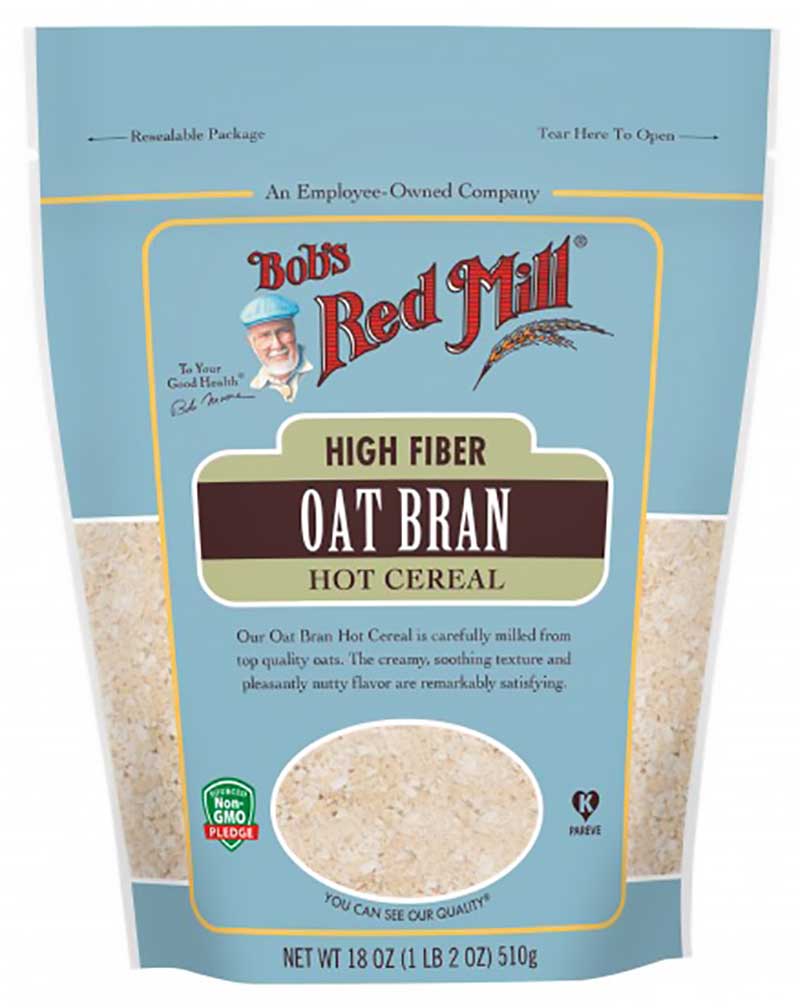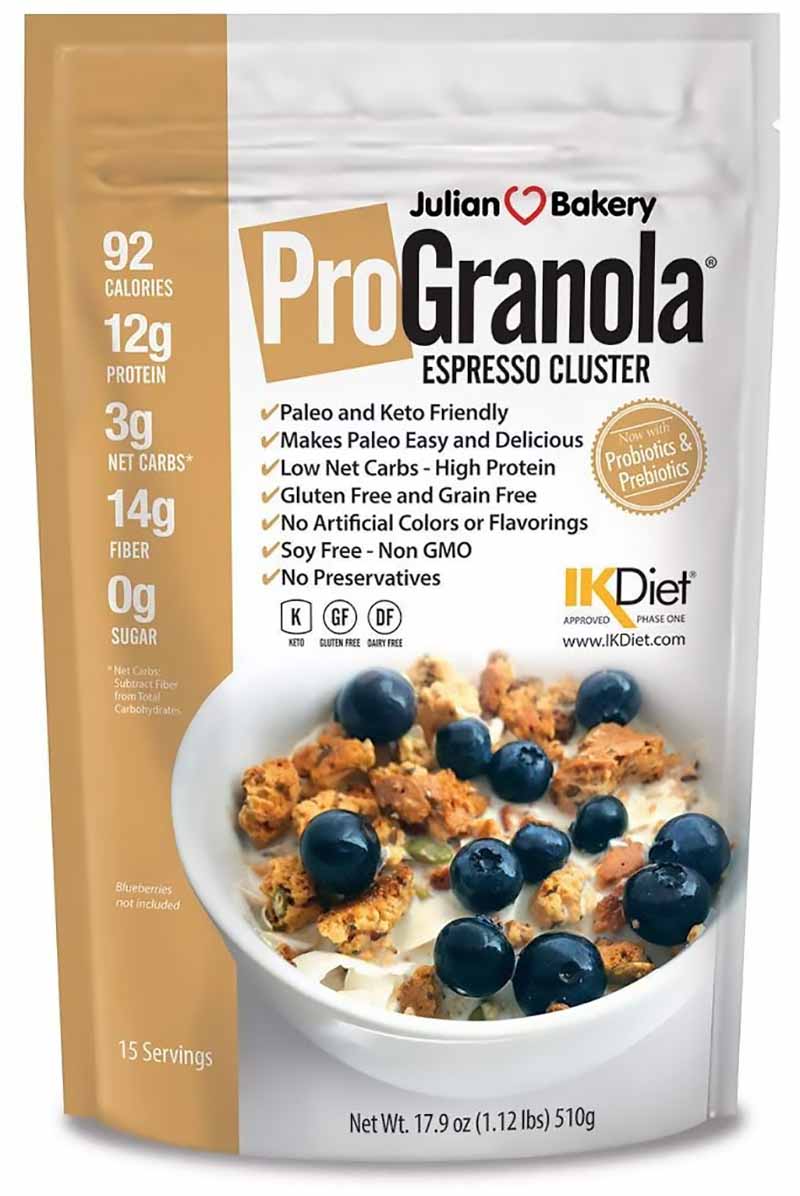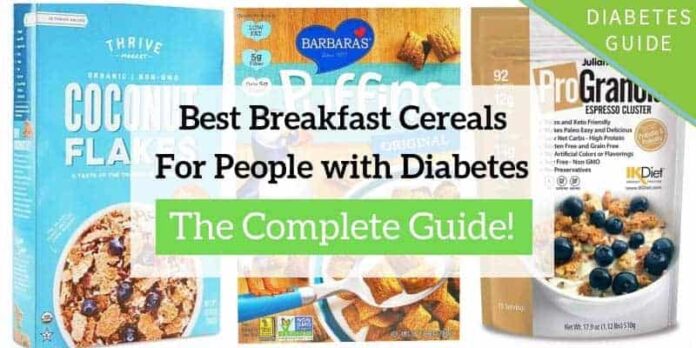This post may contain affiliate links. Please read our disclosure.
Whoever first decided that breakfast ought to be an enormous bowl of highly-processed carbohydrates, additives, and sugar is in big trouble (or at least, they ought to be.)
While many people think that a proper breakfast is a milky bowl containing 60+ grams of nutrition-less carbs, those of us with diabetes know that such a bowl is nothing but trouble.
In this post, I will review the best breakfast cereal options for people with diabetes and share two recipes for making tasty low-carb cereal yourself.
The pursuit for a diabetic breakfast cereal isn’t an easy one. Before we take a look at better options, let’s talk about why traditional cereal causes so much trouble for your blood sugar.
Why most breakfast cereals aren’t great for diabetes
A peculiar thing you may have noticed when trying to dose your insulin for traditional cereals is that your blood sugar still spikes high despite measuring every detail and accounting for every gram of carb.
The problem?
Overall, cereal is a highly processed food” explains Kelly Schmidt, RD, LDN, diabetes health coach who’s lived with type 1 diabetes for nearly 30 years.
“And regardless of the fiber and carb content, if the product is made from grains (gluten-free or not) or corn, it’s going to do a great job at quickly breaking down into glucose and getting into the bloodstream, spiking your blood sugar.”
In other words: Most grain-based cereals (even the ones labeled “whole grain”) are so processed and void of real nutrients that your body doesn’t have to do much to break them down.
Instead, they’re digested rapidly, raising your blood glucose as if you ate 60 grams of carbs when you only ate 30. And sure enough, within an hour or two, you’re starving again.
“If a grain-based cereal is truly desired, make it an occasional thing,” advises Schmidt. “Keep the portion low, allow for an extended pre-bolus, and pair it with a protein or fat dominant food (like breakfast meat or eggs) to help prevent your blood sugar from rising too rapidly.”
Instead, let’s take a look at the few breakfast cereals that people with diabetes can feel good about eating, and actually feel good after eating, too!
Medium-carb, grain-based cereals
Below are two cereals that I think are the best options if you want to eat a whole-grain breakfast. But Schmidt cautions that even these could cause trouble for some.
“Even if I find a high-fiber cereal, the processed grain that makes up the cereal will send blood sugars high, require a larger amount of insulin, and cause hunger shortly after ingestion.”
Personally, I wouldn’t eat either of these daily but I do keep Puffins Original on-hand for the occasional carb-full-snack and as a healthy way to treat severe low blood sugars.
Puffins Original
- ¾ cup = 24 grams carbohydrates per serving
- 5 grams dietary fiber
Total net carbs: 19 grams
Ingredients: Yellow Corn Flour, Corn Bran Flour, Unsulphured Molasses, Whole Oat Flour, Expeller Pressed High Oleic Oil (Canola and/or Sunflower), Salt, Baking Soda, Vitamin C (Ascorbic Acid), Natural Vitamin E (Mixed Tocopherols to maintain freshness).
Why it’s great: This is by far the most “traditional” cereal on this list, but there’s something that really sets it apart from other wannabe “healthy” cereals: it has nearly half the number of ingredients most other box cereals have, which means there’s a lot less garbage in it!
The result? It actually affects your blood sugar the way the carbohydrate count implies, and you can actually calculate your insulin based on the number of net carbs.
Oat Bran & Oat Fiber
- ⅓ cup Bran + 1 tsp Fiber = 26 + 3 grams carbohydrates
- 10 grams dietary fiber
Total net carbs: 19 grams
Ingredients: Oat Bran & Oat Fiber
Why it’s great: Typical oatmeal has a lot of starchy carbs in it. Ever notice how lethargic you feel after eating a bowl, even if your blood sugar doesn’t spike? If you’re looking for a completely clean, whole-food breakfast full of fiber and far less impact on your blood sugar, this is for you!
The massive quantity of fiber in this meal not only slows down the digestion process a bit (which reduces the impact on your blood sugar), it also leaves you feeling full for a while.
Not to mention the awesome effect it’ll have on your bowel movements (sorry, it’s true, so I had to mention it.)
Add a little cinnamon, a handful of blueberries, and/or a sprinkle of stevia, and this is one hearty and healthy breakfast.

Low-carb, grain-free cereals
“I look for a low-glycemic option that won’t send my blood sugars on a rollercoaster ride for the day,” explains Schmidt.
“While the options are slim, there are some that meet the need including coconut flake cereals, which are a very pure option where the ingredients are minimally processed, the total grams of carbohydrates are low, and the ample healthy fat from the coconut buffers the absorption of glucose so an average pre-bolus can keep blood sugars in my goal range easily.”
*Beware that some of these cereals are very high in fat. If you pair them with a diet that is still high in carbohydrates, you may experience a higher spike in your blood sugar than compared to a diet that is generally lower in carbohydrates (under approximately 100 grams per day).
Julian’s Bakery: Coconut Flakes
- ½ cup: 14 grams carbohydrates
- 7 grams dietary fiber
Total net carbs: 7 grams
Ingredients: Coconut Meat, Coconut Water, Palm Starch
Thrive Market Coconut Flakes
- ½ cup: 14 grams carbohydrates
- 5 grams dietary fiber
Total net carbs: 9 grams
Ingredients: Coconut Meat, Coconut Water, Palm Starch
Julian’s Bakery ProGranola
- ⅓ cup: 14 grams carbohydrate
- 12 grams dietary fiber
Total net carbs: 2 grams
Ingredients: Egg White Powder, Organic Digestive Resistant Prebiotic Tapioca Fiber, Organic Pumpkin Seeds, Organic Chia Seeds, Organic Flax Seeds, Organic Sesame Seeds, Organic Unrefined Virgin Coconut Oil, Organic Shredded Coconut, Cinnamon (Ceylon), Organic Vanilla Extract, Lou Han Guo (Monk Fruit)

But those cereals are expensive!
Yes, yes they are! You know what’s cheaper? A couple of eggs over easy and a big pile of sauteed greens with nuts.
There are all kinds of ways to eat a low-carb breakfast and ditch the processed products entirely. I have even collected a long list of the best low-carb recipe ideas for diabetics. (Keep reading for more ideas on this, by the way.)
But you could also create those breakfast cereals for diabetics yourself by simply mixing: unsweetened coconut flakes, pumpkin seeds, a little flax meal, a little oat fiber, frozen blueberries, etc. and pouring a little milk on top! Step out of your comfort zone and try some new things.
What about oats?
Oatmeal can be a decent breakfast option for people with diabetes, but be aware that not all oats are created equal.
Rolled oatmeal, steel-cut oatmeal, and oat bran are all low glycemic index foods, with a GI value of 55 or less. Quick oats have a medium GI, with a value of 56-69, while instant oatmeal is considered a high GI food, with a value of 70 or more.
(The Glycemic Index (GI) is a relative ranking of carbohydrates in foods according to how they affect blood glucose levels. Carbohydrates with a low GI value (55 or less) are more slowly digested, absorbed, and metabolized and cause a lower and slower rise in blood glucose and, therefore usually, insulin levels.)
What about the milk?
If you’re still using good ol’ fashioned cow’s milk in your cereal bowl, you’re truly consuming an extra 12 grams of sugar that could easily be avoided.
Unsweetened versions of almond milk, coconut milk, flax milk, and coconut milk all contain about 1 to 3 grams of carbohydrates per 1 cup, around 35 calories, and lots of plant-based calcium! And they taste good! Give them a try!
Homemade breakfast cereals for diabetics
“Oatmeal was a favorite pastime,” says Schmidt, “but now that I understand the importance of keeping the standard deviation of my blood sugar levels low, I opt for a homemade ‘porridge,’ made of nuts and cauliflower. Yes, the vegetable cauliflower in my cereal bowl!”
Kelly’s hot “porridge”
Ingredients:
- 1/4 cup chia seeds
- 1/4 cup flax meal
- ample amounts of cinnamon, sea salt, and something crunchy like cocoa nibs
- 3/4 cup of hot water (from microwave or teapot)
Directions:
- Stir for 1 to 2 minutes…and enjoy!
Chia seeds are also rich in antioxidants, which provide protection from oxidative stress and reduce the risk of chronic disease. In one study, chia seeds were found to significantly decrease body weight, blood triglycerides, and inflammation.
Kelly’s cauliflower “porridge”
Ingredients:
- 2 cups cauliflower rice (Trader Joe’s sells a frozen version, ready to go)
- 1 tbsp water
- 1 tbsp coconut oil
- 1 egg
- A few drops of liquid stevia
- Sprinkle of cinnamon
- Sprinkle of sea salt
- Collagen protein powder
Directions:
- Add 2 cups of cauli-rice in a saucepan, add in 1 tbsp of coconut oil and a touch of water to help the cauli-rice cook down, then add the spices (cinnamon, sea salt), stirring constantly.
- Add in stevia drops (this will cut the bitterness out of the cauli-rice) and stir in the collagen or other preferred low-carb protein powder.
- Stir for 4 minutes total. Add in an egg and stir for a final 4 minutes.
- Expect to cook for 8 minutes in total.
(*See also: Diabetes Strong’s Cauliflower Oatmeal)

